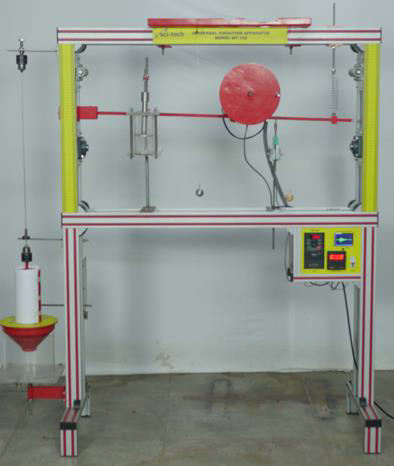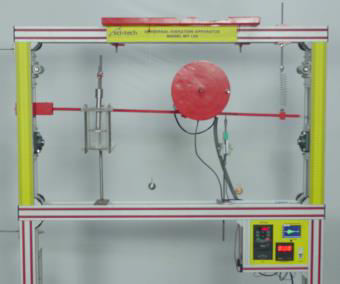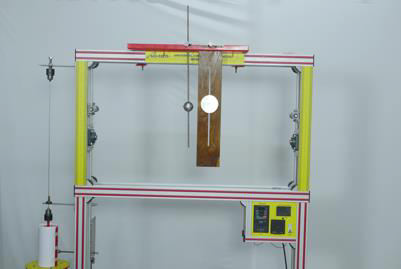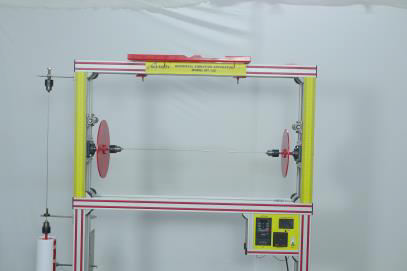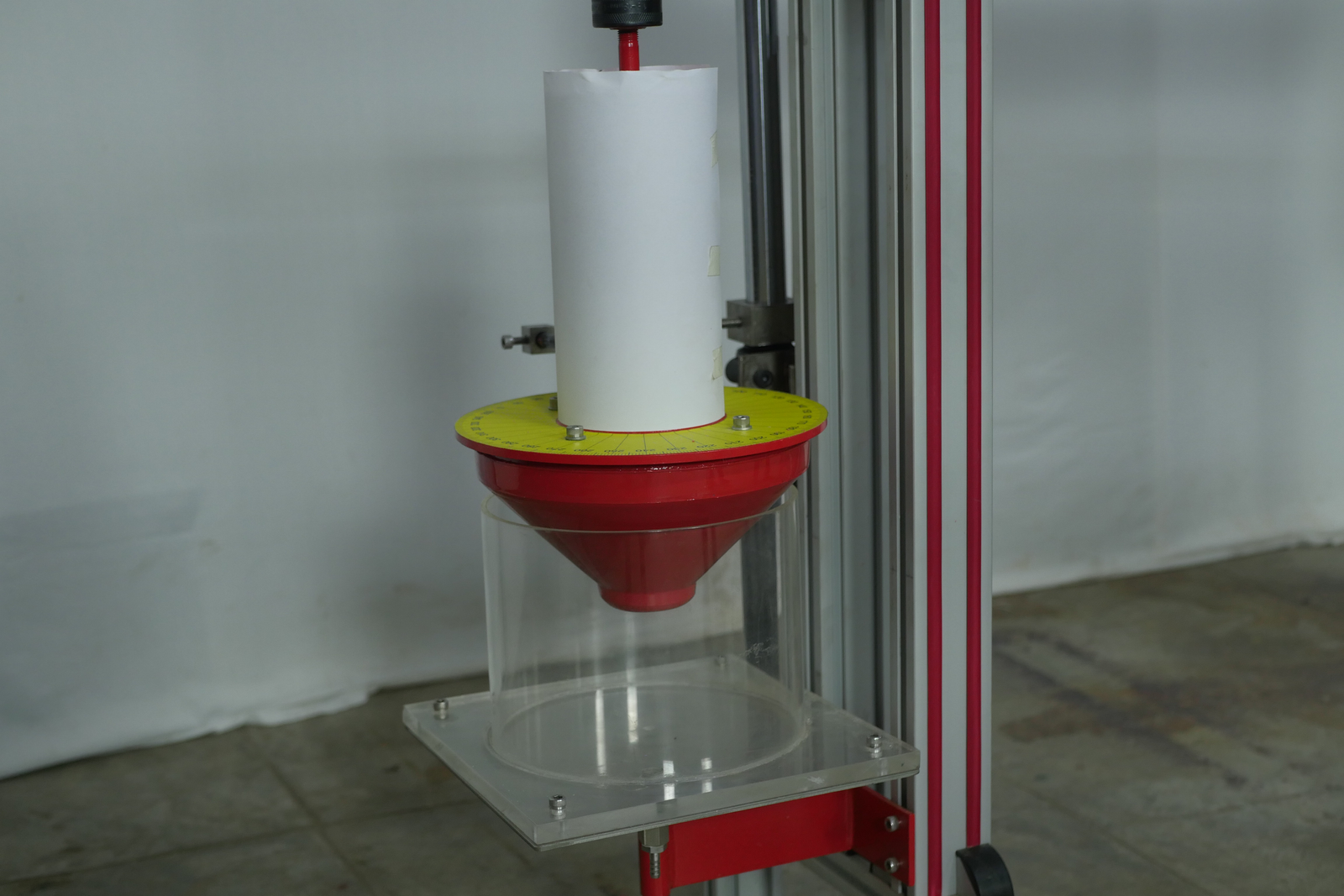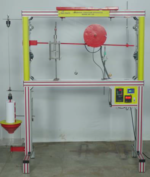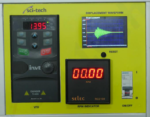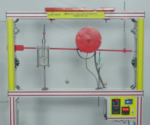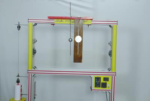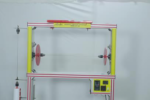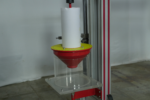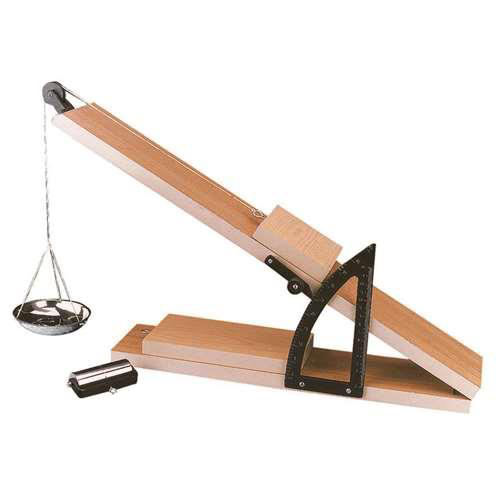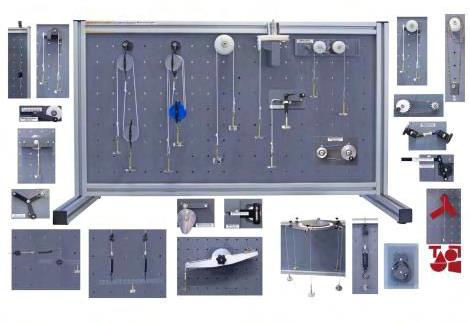Universal Vibration Apparatus Model MT 125
Sci-tech Universal Vibration Apparatus Model MT 125 consists of various parts & measuring units required to carry out variety of vibration experiments like pendulum, mass spring, free and forced vibrations, lateral vibrations, torsional vibrations, resonance and damping vibrations.
Basic frame & measurement panel MT 125 enables to carry out below given experiments.
Data acquisition software and measurements available optionally using ‘Sci-Cal’ box.
Sci-tech Universal Vibration Apparatus Model MT 125 consists of various parts & measuring units required to carry out variety of vibration experiments like pendulum, mass spring, free and forced vibrations, lateral vibrations, torsional vibrations, resonance and damping vibrations.
Basic frame & measurement panel MT 125 enables to carry out below given experiments.
Data acquisition software and measurements available optionally using ‘Sci-Cal’ box.
MODULES
Undamped Vibration Absorber Module MT 125/01
This apparatus is for demonstration of vibration absorption by a double cantilever system.
The vibration absorber consists of two masses clamped onto two spring steel cantilevers which is attached to the exciter unit. The system frequency can be tuned by adjusting the masses along the spring cantilevers.
The system can be used to absorb and reduce the unbalanced force. Exciter speed is measured by a sensor.
Simple Pendulums Module MT 125/02.
This apparatus is for determination of period vs pendulum length.
Two spheres made of steel and wood are suspended by cords from the pendulum top plate. A sensor measures the period of vibration.
Bifilar And Trifilar Suspension Module MT 125/03
This apparatus is for determination of the moment of inertia of an irregular shape object.
For the bifilar experiment, a uniform bar is suspended by two cords from the pendulum top plate. The bar carries two pegged masses. The radius of gyration or moment of inertia of the bar assembly can be determined from the period of torsional vibration.
For the trifilar experiment, a circular plate is suspended by three cords from the pendulum top plate. The circular plate carries three pegged masses. The radius of gyration or moment of inertia of the suspended plate assembly can be determined from the period of torsional vibration.
A sensor measures the period of vibration.
Compound Pendulum Module MT 125/04
This apparatus is for determination of the center of gravity of the rod.
A round steel rod is attached to the pendulum top plate. The rod can be made to slide vertically. A sensor measures angular displacement.
Reverse Pendulum (KATER PENDULUM) Module MT 125/05
This apparatus is for determination of the acceleration due to gravity.
The apparatus consists of a rod and a sliding cylindrical bob attached to the pendulum top plate. The rod can be made to slide vertically. A sensor measures angular displacement.
Center Of Percussion Module MT 125/06
This apparatus is for determination of center of percussion.
The apparatus consist of two pendulums attached to a pendulum top plate. One pendulum is a light steel rod with a steel ball. The other pendulum is a wooden compound pendulum with an adjustable steel weight and knife edges.
The length of the simple pendulum is adjusted so that when allowed to swing and create an impact on the compound pendulum, there is no lateral movement of knife edges on the flat support of the pendulum top plate.
The impact line on the compound pendulum is the line of center of percussion. A sensor measures
period of vibration.
Mass-Spring Apparatus Module MT 125/07
This apparatus is for demonstration of relation between vibration frequency, spring constant and mass.
A coil spring is suspended from a spring bracket attached to the top frame. Different masses are placed on a platform suspended from the lower end of the spring. Three different springs are provided. The platform rod is guided in a bushing to achieve a vertically free motion.
A sensor measures plat form displacement.
Free Vibration for A Beam AND Spring Module MT 125/08
This apparatus is for determination of the natural frequency and amplitude of vibration with and without damping.
The apparatus consists of a beam hinged on a trunnion attached to the left vertical frame. The other end of the beam is attached on to a spring which is hung from a spring bracket. A sensor measures the beam displacement. Extra mass or a damper may be put on to the beam. An oil damper is provided for a study on damped vibration.
Free Vibration Of A Cantilever Module MT 125/09
This apparatus is for demonstrate the relation between natural frequency and beam stiffness.
The apparatus consists of a beam is clamped to a fixed support which cantilever length of the beam can be adjusted. Position of the beam can be set as vertical or horizontal. Two beams of different
thickness are provided. Weights can be added to the tip of the beam to study the frequency for beam of the same stiffness but has different masses.
Forced Vibration Apparatus Module MT 125/10
This apparatus is for a study of frequency ratio vs amplitude and phase angle.
The apparatus is similar to Free Vibration MT 125/09 with a variable speed exciter motor attached to the beam. Two unbalanced rotors are attached to the exciter motor via synchronous belt thus providing a forced vibration when the motor runs. Weights can be attached to the rotors. A sensor measures the exciter speed and another sensor measures the beam displacement.
An oil damper is attached to the beam and is used for phase angel measurement.
Specifications
Motor: 1/4 HP
Speed: 2800 rpm with Digital RPM Indicator
Lateral Vibration Apparatus Module MT 125/11
This is for a study of the frequency ratio vs amplitude and phase angle.
The apparatus consists of a beam hinged on a trunnion attached to the left vertical frame. The right end of the beam is attached to two bearings which are free to move in a guide attached to the right
vertical frame. An exciter motor is attached to the middle of the beam.
An unbalanced rotor is attached to the exciter motor. A weight with its holder is attached to the unbalanced rotor. By running the exciter motor at different speeds, the beam natural frequency can be excited.
A sensor measures exciter speed and another sensor measure the beam displacement. An oil damper attached to the beam is used for measurement of phase angle between beam vibration and exciter motor speed for study of damped vibration.
Torsional Vibration Apparatus, Single Rotor with Damping Module MT 125/12
A rotor is hung vertically from the vibration frame by chucks and a shaft with guide. Three shafts of different diameters are provided. A sensor measures the angular displacement. Eddy current brake is used for damping.
Torsional Vibration Apparatus, Two Rotors Systems Module MT 125/13
This apparatus is to determine vibration period and the node on the shaft for two rotors.
A single rotor and a compound rotor with axles are attached on the left and right vertical frames. The rotors are free to rotate on the axles which are set at the same height. Each rotor has a chuck which can be clamped onto the same shaft. Three different diameter steel shafts are supplied. A sensor
measures angular displacement. A light disc sliding on the shaft locates the node or zero vibration.
Specifications
Manual Disc: 2 Types
Disc Dimensions: 270 mm
Rod diameter: 3 mm
4 mm Rod Holding Device: Chuck
Dimensions: 1200 x 450 x 500 mm
Masses Weights: 100 gm – 5 NOS. Overall Weights: 25 kg (approx.)
Spring Mass System Motor:
Suitable Motor Variac: 12 Volts Adaptors Type
Forced & Natural Speed: 600 rpm

